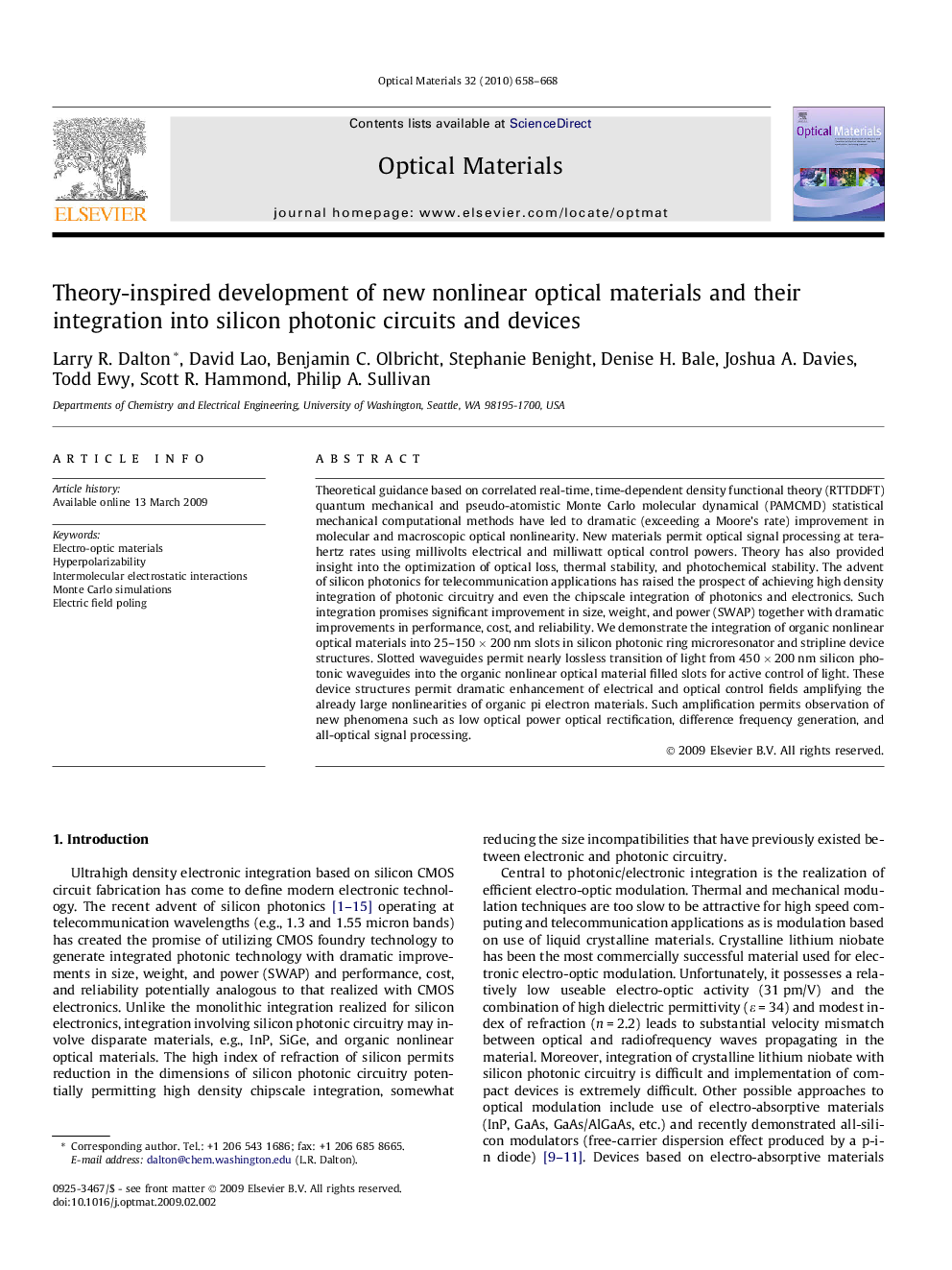| Article ID | Journal | Published Year | Pages | File Type |
|---|---|---|---|---|
| 1496464 | Optical Materials | 2010 | 11 Pages |
Theoretical guidance based on correlated real-time, time-dependent density functional theory (RTTDDFT) quantum mechanical and pseudo-atomistic Monte Carlo molecular dynamical (PAMCMD) statistical mechanical computational methods have led to dramatic (exceeding a Moore’s rate) improvement in molecular and macroscopic optical nonlinearity. New materials permit optical signal processing at terahertz rates using millivolts electrical and milliwatt optical control powers. Theory has also provided insight into the optimization of optical loss, thermal stability, and photochemical stability. The advent of silicon photonics for telecommunication applications has raised the prospect of achieving high density integration of photonic circuitry and even the chipscale integration of photonics and electronics. Such integration promises significant improvement in size, weight, and power (SWAP) together with dramatic improvements in performance, cost, and reliability. We demonstrate the integration of organic nonlinear optical materials into 25–150 × 200 nm slots in silicon photonic ring microresonator and stripline device structures. Slotted waveguides permit nearly lossless transition of light from 450 × 200 nm silicon photonic waveguides into the organic nonlinear optical material filled slots for active control of light. These device structures permit dramatic enhancement of electrical and optical control fields amplifying the already large nonlinearities of organic pi electron materials. Such amplification permits observation of new phenomena such as low optical power optical rectification, difference frequency generation, and all-optical signal processing.
